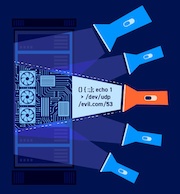Research
Academy
My account
Customers
About
Blog
Careers
Legal
Contact
Resellers
 Burp Suite Enterprise Edition
The enterprise-enabled dynamic web vulnerability scanner.
Burp Suite Enterprise Edition
The enterprise-enabled dynamic web vulnerability scanner.
 Burp Suite Professional
The world's #1 web penetration testing toolkit.
Burp Suite Professional
The world's #1 web penetration testing toolkit.
 Burp Suite Community Edition
The best manual tools to start web security testing.
Burp Suite Community Edition
The best manual tools to start web security testing.
 Dastardly, from Burp Suite
Free, lightweight web application security scanning for CI/CD.
View all product editions
Dastardly, from Burp Suite
Free, lightweight web application security scanning for CI/CD.
View all product editions
 Dastardly, from Burp Suite
Free, lightweight web application security scanning for CI/CD.
View all product editions
Dastardly, from Burp Suite
Free, lightweight web application security scanning for CI/CD.
View all product editions
Attack surface visibility
Improve security posture, prioritize manual testing, free up time.
CI-driven scanning
More proactive security - find and fix vulnerabilities earlier.
Application security testing
See how our software enables the world to secure the web.
DevSecOps
Catch critical bugs; ship more secure software, more quickly.
Penetration testing
Accelerate penetration testing - find more bugs, more quickly.
Automated scanning
Scale dynamic scanning. Reduce risk. Save time/money.
Bug bounty hunting
Level up your hacking and earn more bug bounties.
Compliance
Enhance security monitoring to comply with confidence.
View all solutions
Support Center
Get help and advice from our experts on all things Burp.
Documentation
Tutorials and guides for Burp Suite.
Get Started - Professional
Get started with Burp Suite Professional.
Get Started - Enterprise
Get started with Burp Suite Enterprise Edition.
User Forum
Get your questions answered in the User Forum.
Downloads
Download the latest version of Burp Suite.
Visit the Support Center


